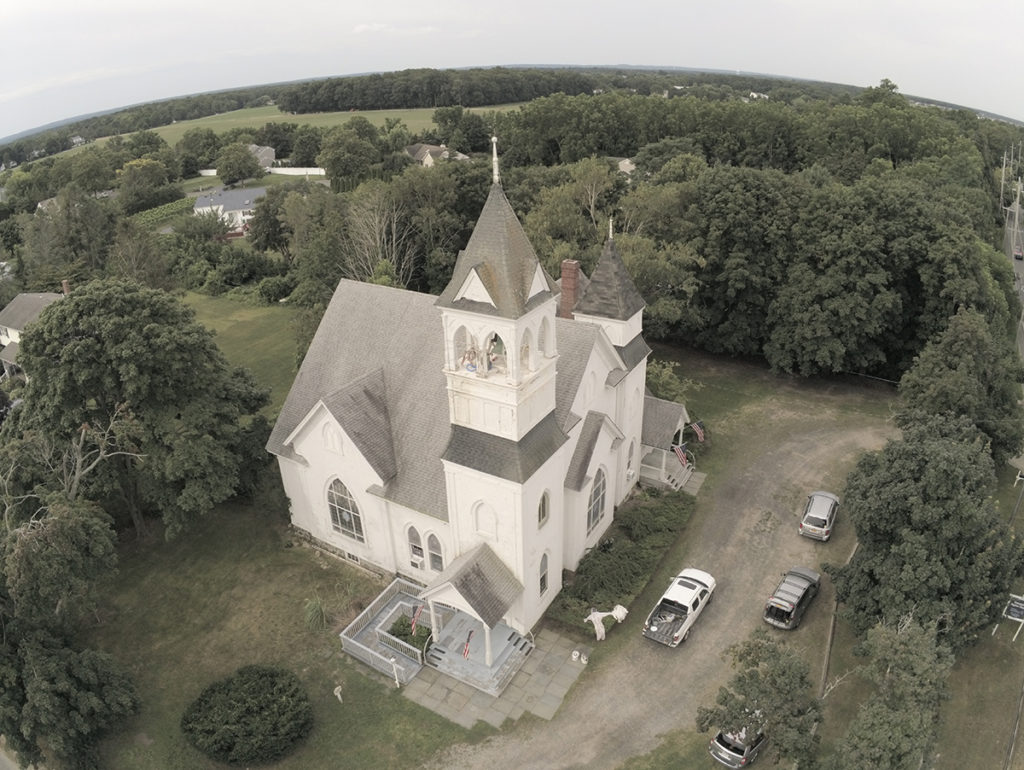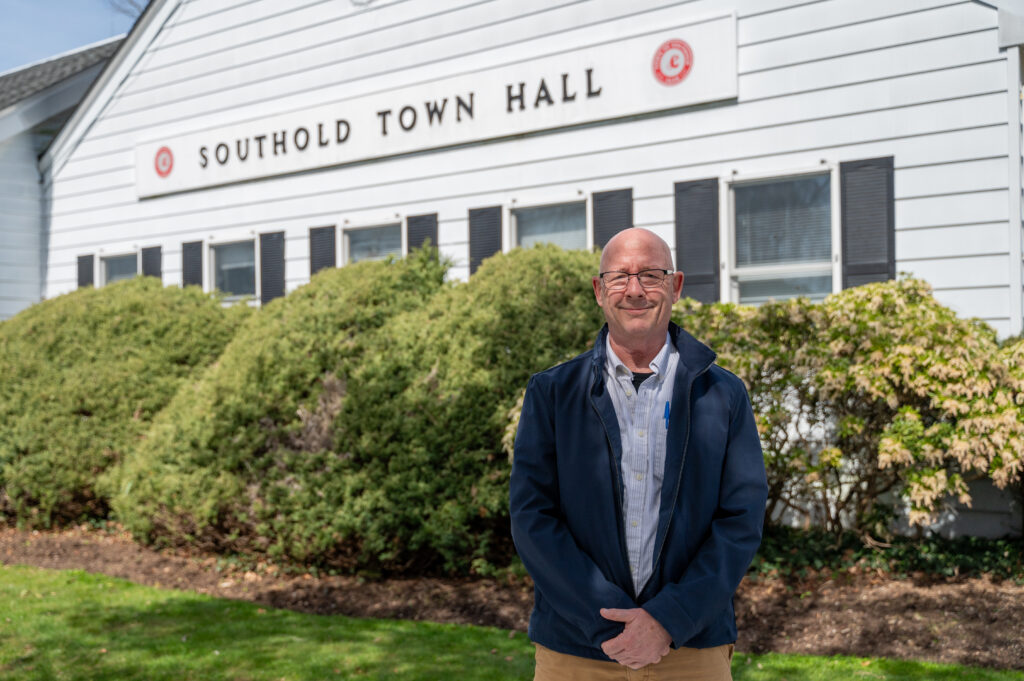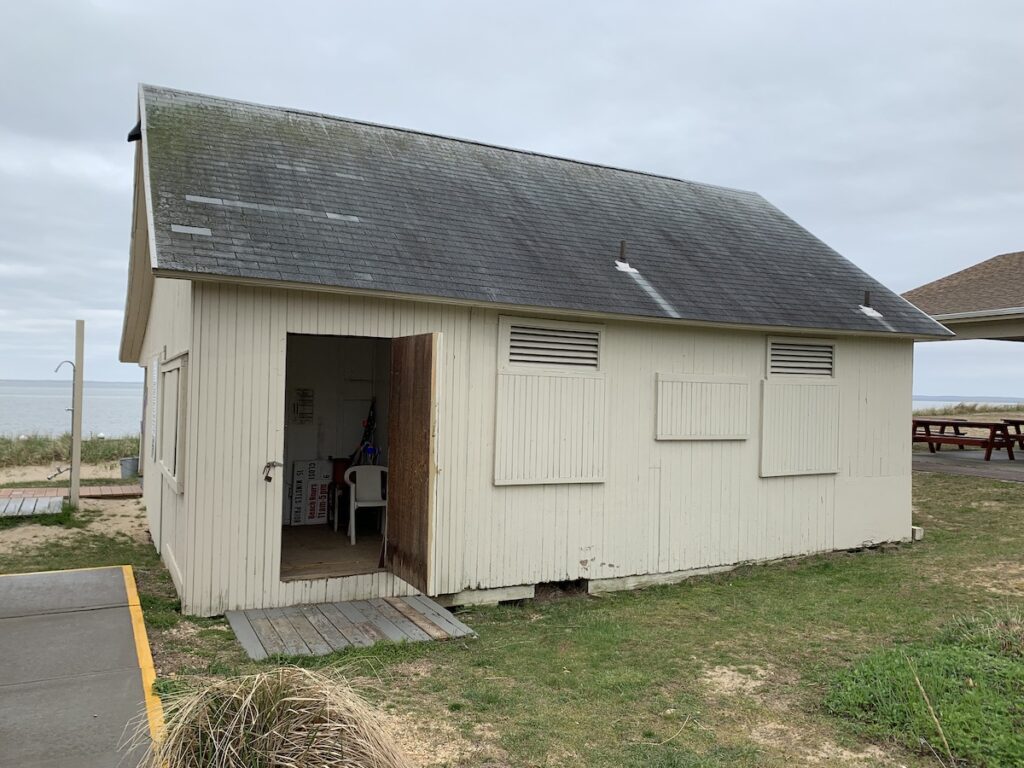Cutchogue beekeeper saves 30,000 honeybees in church steeple

Pastor Andrew Montoro knew in June that he had a bee problem high up in the steeple of the nearly 120-year-old Community Baptist Church building on Sound Avenue in Northville.
On Tuesday, he found out just how severe it was.
Ken Robins, an experienced beekeeper from Cutchogue who maintains more than 60 hives on the North Fork, ascended a narrow ladder from the main floor of the church to a second ladder, which led him to a third ladder and then to the steeple atop the church.
He was followed by County Legislator Al Krupski (D-Cutchogue), who has beehives on his farm and who recently wrote a first-of-its-kind bill protecting honeybees from being killed that was passed unanimously by the legislature.
The bees in the steeple were honeybees, which is why Mr. Robins was summoned to safely remove them and to help them find another home.
“These honeybees pollinate so much of what we need, so much of our food, and they also produce food themselves,” Mr. Robins said, holding up a jar of honey taken from hives he maintains on Wickham’s Fruit Farm property in Cutchogue. “These little insects are miracle workers and have to be protected.”
When Mr. Robins reached the steeple, with Mr. Krupski right behind him, he carefully began removing comb after comb from inside the walls of the steeple. Mr. Robins considers himself a passionate fan of honeybees and values their contribution to the world and the role they play in food and plant production.
Some of the combs were up to two feet in length. When he started Mr. Robins estimated there could be at least 30,000 bees in the steeple. And it could be considerably more.
Slowly, he removed 11 combs, placed them in a specially prepared box, and lowered the box on a rope to the ground below.

Outside, Mr. Krupski said he relished being in the steeple to watch the removal unfold. A week or so after passing his honeybee bill, here he was watching them be carefully removed and protected.
“The bill was just common sense,” he said. “It was the right thing to do. We want people to understand the different kind of bees so that if they call an exterminator with a problem they know they can identify honeybees from yellow jackets or wasps.”
As for climbing up the more-than-a-century-old ladder to the steeple? “That was challenging; it’s a very narrow space and hardly any room for my size 13 feet. But I am so glad I could see it happen,” he said.
As for what happens to these bees now, Mr. Robins proposed to Pastor Montoro that the church hold an auction to see if farmers who need pollinators or others who are passionate about the bees will buy the hive, with the money going to help upgrade the church, whose roots go back to the 19th century.
Pastor Montoro asked anyone who is interested to email the church at [email protected]. The bees will go the highest bidder.
Meanwhile, Mr. Robins will take them to his home, where he has other hives he maintains. “Preserving them helps everyone,” he said. “I am hoping someone will buy them, which will help the church.”
During the removal process, Mr. Robins’ friend Rory MacNish filmed with a drone so that video could be taken from the height of the steeple. To see that video once it’s posted, go to Mr. MacNish’s YouTube channel, REM75Productions.








